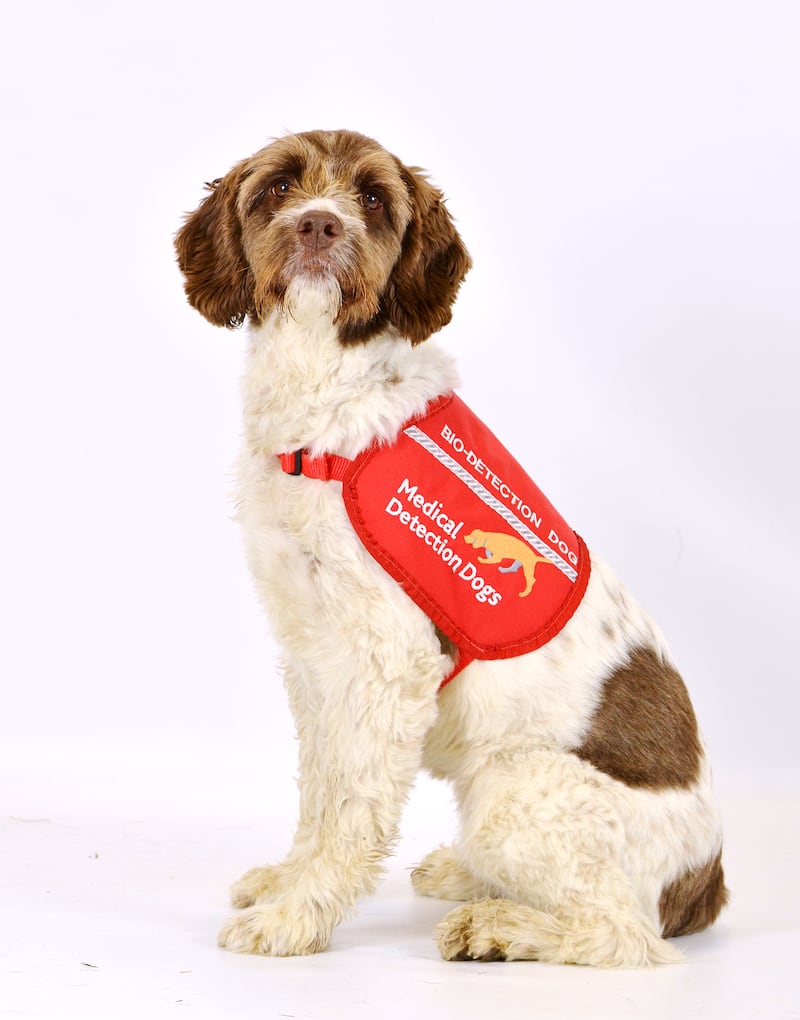Dogs can sniff out bacteria that is a major of cause of lung damage in people with cystic fibrosis before it takes hold, according to a study.
Research found the animals can detect ultra-low concentrations of pseudomonas, the commonest cause of lung infection in the disease.
Bio detection dogs have a very high level of accuracy when asked to identify bacteria associated with serious lung infections, research by Imperial College London and the Cystic Fibrosis Trust suggests.
A major cause of lung damage in cystic fibrosis (CF) is infection with bacterial pathogens, the most prevalent of which is pseudomonas aeruginosa (Pa).
It chronically infects about 60% of the 10,000 patients in the UK by adolescence and adulthood.
The study – published in the European Respiratory Journal – shows the canines can differentiate between Pa and other CF bacterial pathogens by sniffing bacteria grown in a nutrient liquid.
Compared with existing technologies, dogs may ultimately prove more sensitive or more affordable for screening lower airway infection in CF, the researchers say.
Pa may be successfully eradicated but frequently reoccurs and develops resistance to antibiotics.

Chronic Pa is closely linked with faster lung function decline and earlier mortality.
It is harder to diagnose in children with CF but takes hold of the lungs and becomes extremely difficult to shift.
If they have symptoms, they are usually prescribed a broad spectrum antibiotic that will not work if the culprit is pseudomonas.
Early detection will lead to them receiving a targeted antibiotic, stopping the bacteria taking hold, according to the scientists.
Professor Jane Davies, from Imperial College London, said: “This is a really exciting development.
“Advanced technology to detect infections, for example in breath, has proved difficult so far.
“The successful training of the dogs on cultured samples will now be used as the foundation for testing patient samples directly.
“People with CF could ultimately monitor their lung infections from home by sending in samples for the dogs to check.”
Researchers assessed the ability of four dogs to identify Pa from other CF bacteria.
The bacteria were grown in the lab and then filtered out of the solution, which was presented to the four-legged creatures.

In the trial they were trained and tested on customised sample presentation stands.
During training, correct identification of Pa samples was rewarded by an auditory click and food.
Once trained, they were presented with Pa-positive cultured samples, other cultured bacterial controls or sterile liquid in a random, computer-generated sequence.
A positive indication – when the dog either stopped or sat down – was rewarded if correct.
The samples were then presented in a double-blind testing scenario.
Bio-detection dogs, trained by the Medical Detection Dogs charity, may be crucial to the early detection and rapid treatment of chronic Pa, scientists say.
Dr Claire Guest, chief executive and co-founder of Medical Detection Dogs, said: “The findings of this world-first study into the ability of dogs to detect pseudomonas are yet another indicator of their remarkable contribution to saving human lives.”
Dr Janet Allen, director of strategic innovation at the Cystic Fibrosis Trust, said: “A quick and easy way of detecting pseudomonas would make a massive difference to people with cystic fibrosis and their families.
“Once it takes hold, it requires strong antibiotics that can require hospital stays and often carry significant side effects.
“Some antibiotic-resistant strains can even cause permanent, life-shortening lung damage.”








